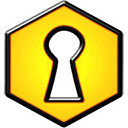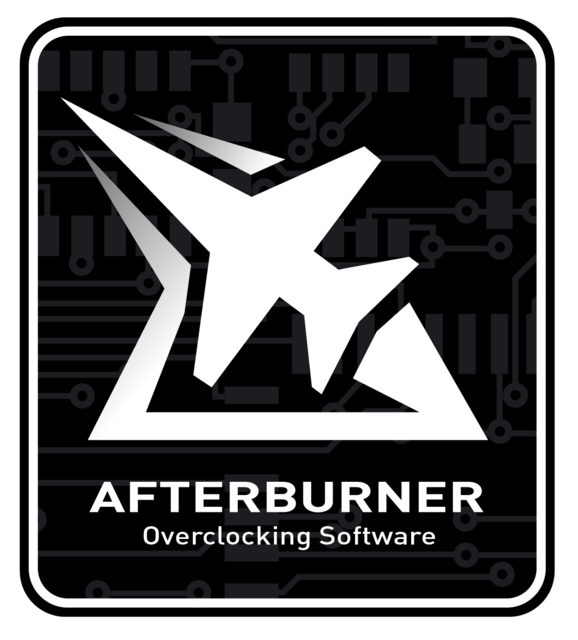
Postgres12.5
Network Services, Management, Productivity, Tools / Utilities, Utilities
bPostgresql 12.5, alpine edition for less resource useage/b /br /br UNRAID template that JUST WORKS, brought to you by Flight777!
Browse our large and growing catalog of applications to run in your Unraid server.

Network Services, Management, Productivity, Tools / Utilities, Utilities
bPostgresql 12.5, alpine edition for less resource useage/b /br /br UNRAID template that JUST WORKS, brought to you by Flight777!
Postgresql for use with gitlab. Install this docker before installing the gitlab docker.

Network Services, Other, Other, Productivity, Tools / Utilities, Utilities
|------------------------------------------------- | General Information |------------------------------------------------- PostgreSQL, often simply "Postgres", is an object-relational database management system (ORDBMS) with an emphasis on extensibility and standards-compliance. As a database server, its primary function is to store data, securely and supporting best practices, and retrieve it later, as requested by other software applications, be it those on the same computer or those running on another computer across a network (including the Internet). It can handle workloads ranging from small single-machine applications to large Internet-facing applications with many concurrent users. Recent versions also provide replication of the database itself for security and scalability. PostgreSQL implements the majority of the SQL:2011 standard, is ACID-compliant and transactional (including most DDL statements) avoiding locking issues using multiversion concurrency control (MVCC), provides immunity to dirty reads and full serializability; handles complex SQL queries using many indexing methods that are not available in other databases; has updateable views and materialized views, triggers, foreign keys; supports functions and stored procedures, and other expandability, and has a large number of extensions written by third parties. In addition to the possibility of working with the major proprietary and open source databases, PostgreSQL supports migration from them, by its extensive standard SQL support and available migration tools. And if proprietary extensions had been used, by its extensibility that can emulate many through some built-in and third-party open source compatibility extensions, such as for Oracle.

Network Services, Management, Productivity, Tools / Utilities, Utilities
PostgreSQL 12 is a powerful, open source object-relational database system. Uses official Postgres Docker image @ https://hub.docker.com/_/postgres/ Configuration /mnt/cache/appdata/postgresql12 This is where Postgres will store it's data. For best performance, keep the files on cache drive. Port 5432 Default connection port POSTGRES_PASSWORD Superuser password. REQUIRED TO SET, otherwise connecting outside container will not be possible. POSTGRES_USER Username for the superuser. Defaults to postgres if not set. POSTGRES_DB Used to define different name for default database. Defaults to user if not set.

Network Services, Management, Productivity, Tools / Utilities, Utilities
PostgreSQL 13 is a powerful, open source object-relational database system. Uses official Postgres Docker image @ https://hub.docker.com/_/postgres/ Configuration /mnt/cache/appdata/postgresql13 This is where Postgres will store it's data. For best performance, keep the files on cache drive. Port 5432 Default connection port POSTGRES_PASSWORD Superuser password. REQUIRED TO SET, otherwise connecting outside container will not be possible. POSTGRES_USER Username for the superuser. Defaults to postgres if not set. POSTGRES_DB Used to define different name for default database. Defaults to user if not set.

Network Services, Management, Productivity, Tools / Utilities, Utilities
PostgreSQL 14 is a powerful, open source object-relational database system. Uses official Postgres Docker image @ https://hub.docker.com/_/postgres/ Configuration /mnt/cache/appdata/postgresql14 This is where Postgres will store it's data. For best performance, keep the files on cache drive. Port 5432 Default connection port POSTGRES_PASSWORD Superuser password. REQUIRED TO SET, otherwise connecting outside container will not be possible. POSTGRES_USER Username for the superuser. Defaults to postgres if not set. POSTGRES_DB Used to define different name for default database. Defaults to user if not set.

Network Services, Management, Productivity, Tools / Utilities, Utilities
PostgreSQL 15 is a powerful, open source object-relational database system. Uses official Postgres Docker image @ https://hub.docker.com/_/postgres/ Configuration /mnt/cache/appdata/postgresql15 This is where Postgres will store it's data. For best performance, keep the files on cache drive. Port 5432 Default connection port POSTGRES_PASSWORD Superuser password. REQUIRED TO SET, otherwise connecting outside container will not be possible. POSTGRES_USER Username for the superuser. Defaults to postgres if not set. POSTGRES_DB Used to define different name for default database. Defaults to user if not set.
Network Services, Management, Productivity, Tools / Utilities, Utilities
PostgreSQL 16 is a powerful, open source object-relational database system with over 35 years of active development that has earned it a strong reputation for reliability, feature robustness, and performance. This template uses the official PostgreSQL Docker image @ https://hub.docker.com/_/postgres/.
Network Services, Management, Productivity, Tools / Utilities, Utilities
PostgreSQL 17 is a powerful, open source object-relational database system with over 35 years of active development that has earned it a strong reputation for reliability, feature robustness, and performance. This template uses the official PostgreSQL Docker image @ https://hub.docker.com/_/postgres/.
Media Applications, Other, Other, Productivity, Tools / Utilities, Utilities
Everything you need to manage your social media posts, build an audience, capture leads, and grow your business.

This Docker will download and install SteamCMD. It will also install PostScriptum and run it. ATTENTION: First Startup can take very long since it downloads the gameserver files! Update Notice: Simply restart the container if a newer version of the game is available. You can also run multiple servers with only one SteamCMD directory!
PowerShell Universal is the ultimate platform for building web-based IT tools.

Bridge your *Arr clients (Sonarr, Radarr) to your premiumize.me (upload/download manager) Monitor blackhole directory to push .magnet and .nzb to Premiumize.me. Monitor and download Premiumize.me transfers (web ui on default port 8182). Mark transfers as failed in Radarr and Sonarr https://hub.docker.com/r/datpat/premiumizearr/

Preview maid is a tool to help you find missing thumbnail previews in your plex library. By default it will run on a schedule at 00:00. Optionally you can have it run once and output before exiting.
Printbed is a 3D print file hosting system PrintBed is currently a very early Alpha. Some basic features are currently broken or may break in the future.

Run a Pritunl VPN Server Configuration /config This is where the default configs and logs are. Launch the Web Interface at port `9700` to manage Pritunl. Port `1194` udp/tcp is default for the VPN. When you add a "server" and set the bind port to 0.0.0.0`, until UnRAID supports ipv6. Submit any UnRaid issues here: http://forums.unraid.net/index.php?topic=48370.0

A minimalist, open source online pastebin where the server has zero knowledge of pasted data. Data is encrypted/decrypted in the browser using 256 bits AES.
Media Applications, Video, Media Servers, Video, Other, Productivity, Tools / Utilities, Utilities
A custom format / quality profile management tool that acts as a middleman between a configuration database and your Radarr/Sonarr installations

Cloud, Network Services, Other, Productivity, Tools / Utilities, Utilities
Projectsend(http://www.projectsend.org) is a self-hosted application that lets you upload files and assign them to specific clients that you create yourself. Secure, private and easy. No more depending on external services or e-mail to send those files.

This Docker will download and install SteamCMD. It will also install Project Zomboid and run it. Servername: 'Docker ProjectZomboid' Password: 'Docker' AdminPassword: 'adminDocker' ATTENTION: First Startup can take very long since it downloads the gameserver files! CONSOLE: To connect to the console open up a terminal and type in: 'docker exec -u steam -ti NAMEOFYOURCONTAINER screen -xS PZ' (without quotes), to disconnect from the console simply close the window. Update Notice: Simply restart the container if a newer version of the game is available. You can also run multiple servers with only one SteamCMD directory!
This api is used to access your project zomboid data stored in sql to pass to the main reporter. NOTE: if your sql database is not running on the default port, you will need to provide a value for it below
This is the frontend template used in the Project Zomboid Reporter. All visuals used in the final Reporter are pulled from here.
This is the ingester which grabs statiscs from your Project Zomboid server files and uploads them to the SQL database for the API to access. NOTE: if you havnt had a player connect to your server yet, you will get an error. If you are having issues with the database tables not being autocreated, connect to the database with adminer (or another program of your choice) and create the tables and structure with the following: USE Zombo; SET NAMES utf8mb4; CREATE TABLE Game ( id int NOT NULL AUTO_INCREMENT, dayofmonth int NOT NULL, month int NOT NULL, daysSinceStart int NOT NULL, name text NOT NULL, maxPlayers int NOT NULL, startDay int NOT NULL, startMonth int NOT NULL, startYear int NOT NULL, year int NOT NULL, PRIMARY KEY (id) ) ENGINE=InnoDB DEFAULT CHARSET=utf8mb4 COLLATE=utf8mb4_0900_ai_ci; CREATE TABLE Players ( id int NOT NULL AUTO_INCREMENT, username text NOT NULL, charname text CHARACTER SET utf8mb4 COLLATE utf8mb4_0900_ai_ci NOT NULL, x float NOT NULL, y float NOT NULL, data blob NOT NULL, lastOnline text NOT NULL, PRIMARY KEY (id) ) ENGINE=InnoDB DEFAULT CHARSET=utf8mb4 COLLATE=utf8mb4_0900_ai_ci;
This is an nginx server with a custom conf applied. It will grab combined API calls to the api endpoint, and also components from the frontend template. You will need to download the conf file from the below and modify the below lines to match your server ip, then place in the appdata folder. https://raw.githubusercontent.com/natcoso9955/Zomboid-Server-Stats-Reporter/main/nginx/default.conf upstream client { server YOURSERVERIPHERE:3000; } upstream api { server YOURSERVERIPHERE:3001; }

The Alertmanager handles alerts sent by client applications such as the Prometheus server. It takes care of deduplicating, grouping, and routing them to the correct receiver integrations such as email, PagerDuty, OpsGenie, or many other mechanisms thanks to the webhook receiver. It also takes care of silencing and inhibition of alerts. alertmanager/alertmanager.yml This configuration contains information about which channels to send to. For simplicity, we use e-mail. Refer to the Alertmanager docs to learn about other channels. To configure prometheus to use these alerts, add the below to prometheus/prometheus.yml: alerting: alertmanagers: - scheme: http static_configs: - targets: < 'alertmanager:9093' >

Prometheus is a systems and service monitoring system. It collects metrics from configured targets at given intervals, evaluates rule expressions, displays the results, and can trigger alerts if some condition is observed to be true.

Is a slim plugin, that takes informations gathered form the MSI Afterburner Remote Server API and provides it to a Prometheus database. Usage is not limited to Prometheus only. Data can be formated and displayed to any database or graphical node. This plugin requires the MSI Afterburner Remote Server on the machine that you want to watch, please configure the IP address of your local MSI Afterburner Remote Server on the Settings page from the plugin! Export URL: The URL for the exportet metrics is: 'http://YOURunRAIDIP:9091/metrics' (to use it in Prometheus add the target: 'YOURunRAIDIP:9091' to your Prometheus yaml). This Plugin is based on: https://github.com/kennedyoliveira/prometheus-msi-afterburner-exporter

Is a slim plugin, that takes informations gathered from nvidia-smi and provides it to a Prometheus database. Usage is not limited to Prometheus only. Data can be formated and displayed to any database or graphical node. Export URL: The URL for the exportet metrics is: 'http://YOURunRAIDIP:9202/metrics' (to use it in Prometheus add the target: 'YOURunRAIDIP:9202' to your Prometheus yaml). This Plugin is based on: https://github.com/e7d/docker-prometheus-nvidiasmi

Network Services, Management, Other, Tools / Utilities, Utilities
This is the Prometheus you already know and love, but with an easy way to configure the retention time for the data you collect. The default value for retention time is 15 days, but there is no way to change this in the config file. This value can only be set with a flag at startup. This image allows you to configure the retention time using an environment variable and allows for other startup flags to be added later if needed. For more info on the storage-related startup flags, see: https://prometheus.io/docs/prometheus/latest/storage/#operational-aspects

Is a slim plugin, that takes informations gathered from your Fritzbox and provides it to a Prometheus database. Usage is not limited to Prometheus only. Data can be formated and displayed to any database or graphical node. Export URL: The URL for the exportet metrics is: 'http://YOURunRAIDIP:9042/metrics' (to use it in Prometheus add the target: 'YOURunRAIDIP:9042' to your Prometheus yaml). This Plugin is based on fritzbox-exporter from sberk42: https://github.com/sberk42/fritzbox_exporter